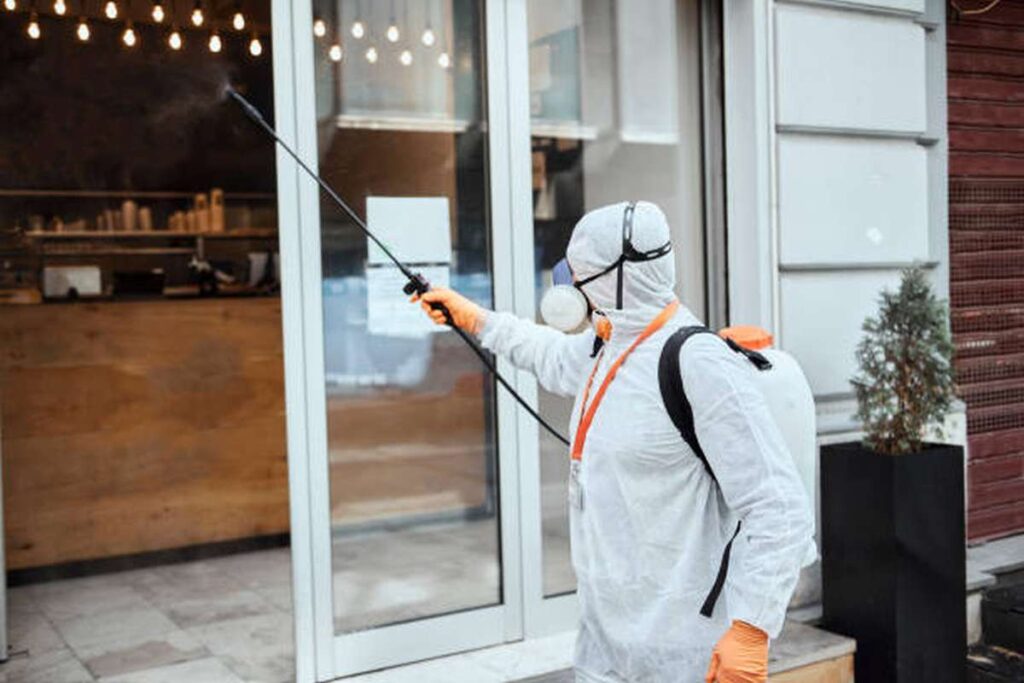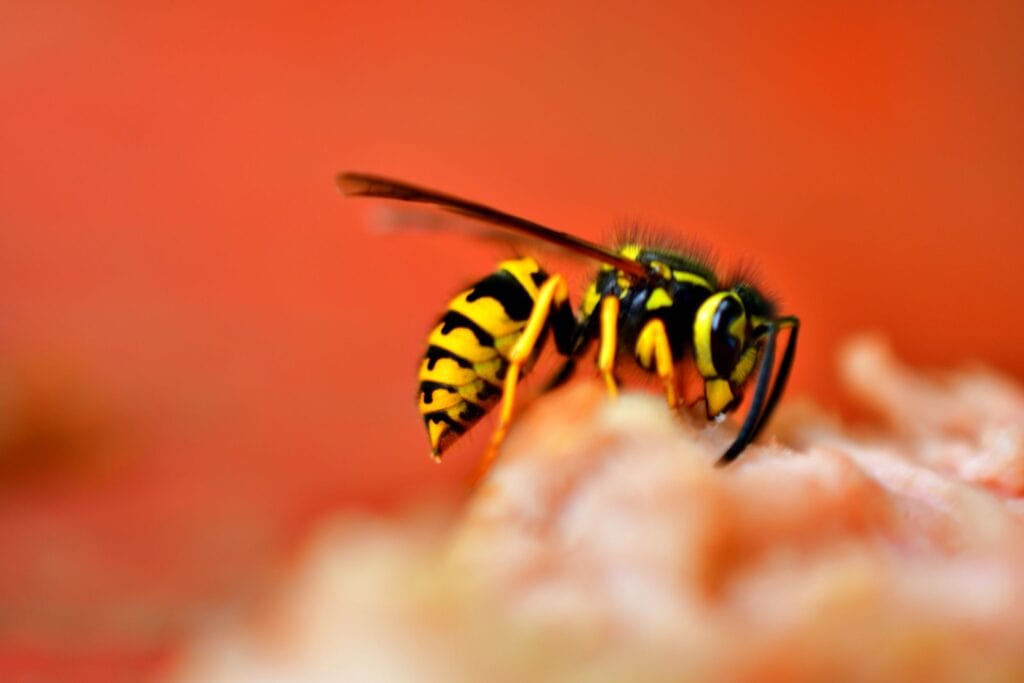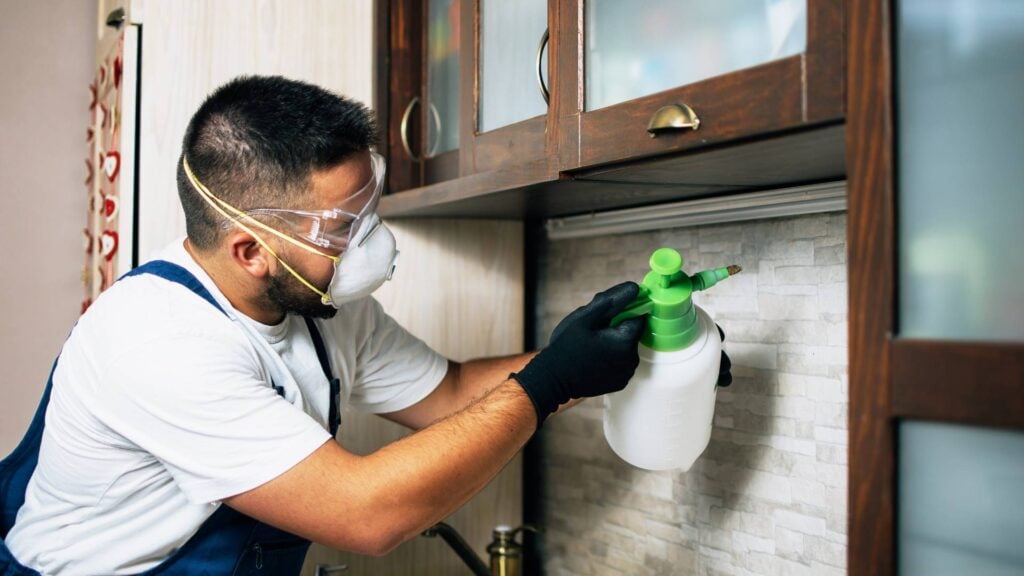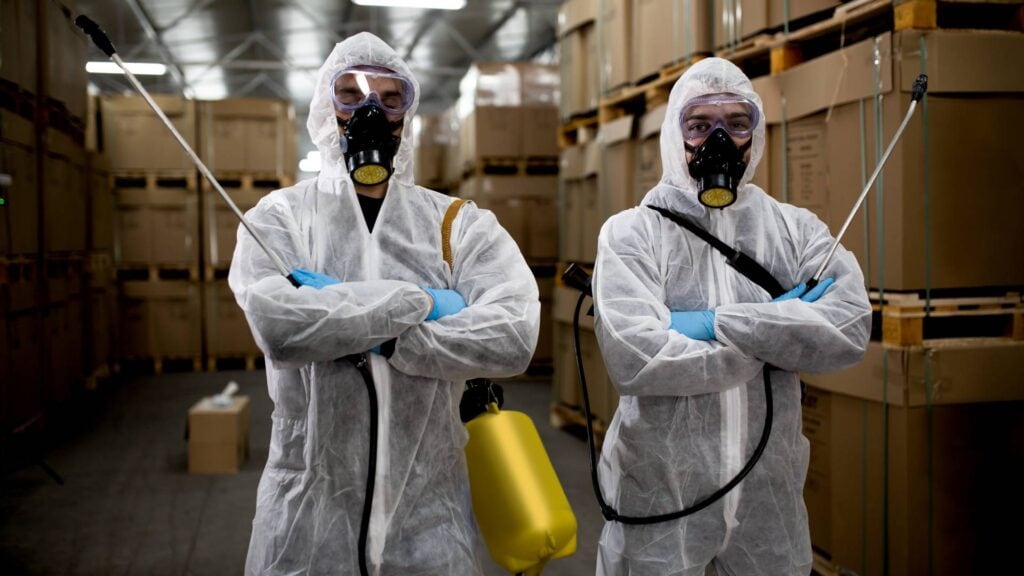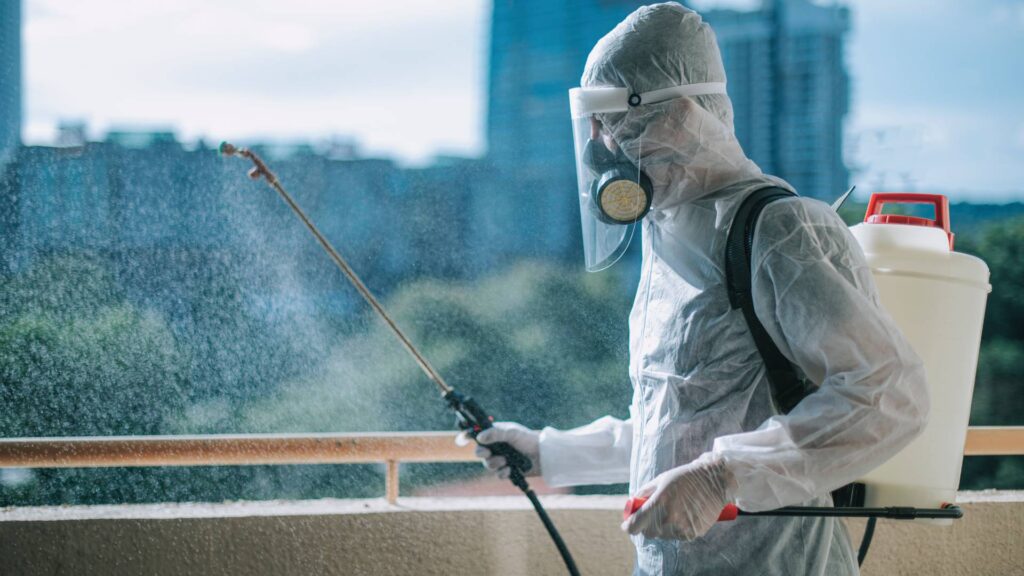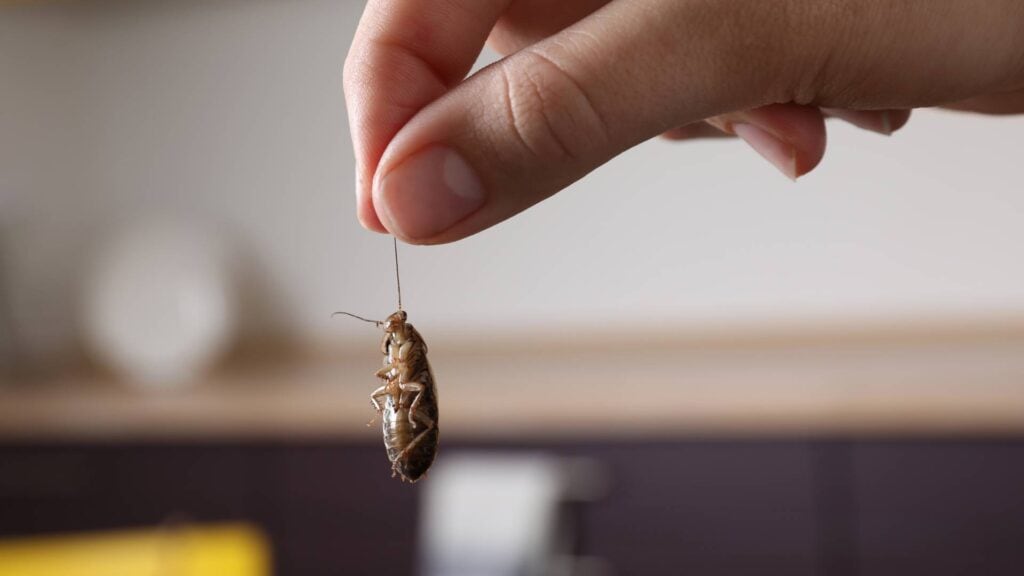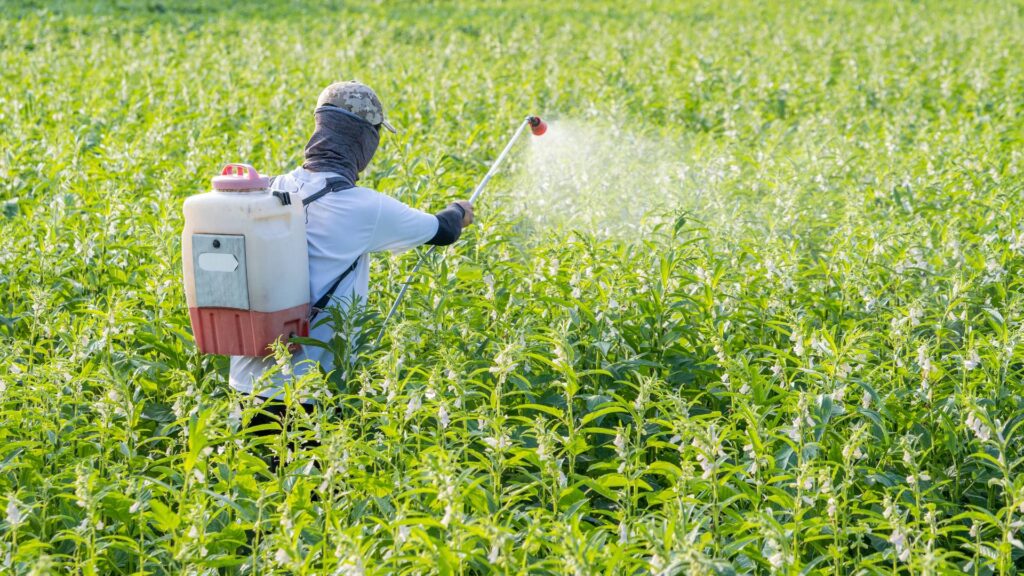Both homes and businesses can suffer from pest infestations. Damage to property and human health are only two of the many problems pests may create. Chemicals used in conventional pest management are potentially hazardous to human and environmental health. The sustainable pest management method known as Integrated Pest Management (IPM) aims to manage pests efficiently with as little chemical intervention as possible. People need help weighing the benefits of integrated pest management (IPM) against its drawbacks.
Getting the word out about the merits of integrated pest management as a solution to this issue is crucial. IPM is an eco-friendly strategy since it integrates cultural, biological, and chemical approaches to pest management. In addition, IPM uses non-chemical approaches to pest management, lessening the toll on human and environmental health. IPM also saves money in the long term, which is a major plus. However, traditional pest control methods often need to be repeated, which can add cost. In contrast, integrated pest management (IPM) looks to save money in the long run by preventing pest infestations through routine inspections and monitoring.
This blog post will discuss the cons and pros of integrated pest management. The advantages of this environmentally friendly method can help you make a well-informed choice about pest control in your home or company. First, we'll go through the basics of IPM and show you why it's a better long-term solution than poisons and traps for pests. The drawbacks of IPM, such as its high entry price and the frequency of inspections, will also be discussed. Finally, we shall demonstrate that the long-term advantages of IPM more than compensate for the short-term drawbacks. Find out why IPM is the future of environmentally responsible pest management and its benefits and drawbacks by reading on it.
What Is Integrated Pest Management (IPM)?
Agricultural pest damage may be reduced using Integrated Pest Management techniques, which are safer for people and the environment than conventional pest control methods. It's a method for controlling and eradicating insects, rodents, and other pests anywhere from city neighbourhoods to national parks and farm fields.
Integrated Pest Management (IPM) is an ecosystem-based strategy that employs a wide range of methods—including habitat change, biological control, resistant cultivars, and modifications to cultural practices—to reduce the prevalence of pests and the harm they cause over time.
Integrated Pest Management programmes effectively reduce pest populations by integrating several pest management approaches that provide the least risk to individuals, property, and the environment.
Non-farming locations, including the home, office, and garden, may all benefit from integrated pest management techniques. "Integrated" in IBM stands for the complementary application of many tactics.
The "Pest" is any creature whose actions are harmful to humans. The term "Management" refers to the policy choices made to implement the strategy for pest management. When you combine these three terms, you understand what IBM represents. The topic of pests will be discussed first.
Agricultural, forestry, orchard, landscaping, and household plants can all be negatively impacted by pests. In addition to being a nuisance or a potential disease vector, pests can significantly influence human or animal health.
Vertebrates (mice, birds, rats, and mammals), plants (weeds), diseases (bacteria, viruses, fungi), invertebrates (ticks, insects, snails, mites, nematodes), and worms are all examples of pests. These organisms spread diseases, and their actions can harm the aquatic and animal life they inhabit.
How Does Integrated Pest Management Work?
Integrated Pest Management aims to control pest populations and protect the environment from harm. IPM is the most effective method for eradicating pests and the damage they cause since it results in crops that are strong enough to deter and survive insect attacks, infections, and illnesses.
Previous pest control techniques have been effective, but they have also negatively affected the environment and human health. However, when pests are eliminated using IPM, no harm is done to the surrounding ecosystem.
Monitoring and identifying the pest is the first step in deciding which Integrated Pest Management system would be most effective. Pests, their populations, and the level of damage they've caused may all be tracked by carefully monitoring an outdoor space (or an inside one, for that matter).
The only way to determine if a pest is an issue or will become one, and the best IPM method to eliminate it is to identify it correctly. Once the pest is identified and the potential biological and environmental damage is calculated, a decision can be made regarding tolerance or control.
Integrated Pest Management entails four phases: pest identification and monitoring, threshold determination, prevention, and control. We're going to analyse these processes.
Monitoring and Identifying Pests

Earlier, we discussed the importance of identifying the local pest population before deciding on a pest management strategy. Not all pests, including insects and plants, pose a threat that needs elimination. Using unnecessary or inappropriate pesticides can be eliminated by proper identification and monitoring.
Limits for Intervention
The second stage of IPM involves establishing an action threshold before employing any particular type of pest management. To choose the most effective strategy for eliminating pests, examining the current pest population and surrounding environment is necessary. There may be no need for pest management if only one type of pest is discovered. IPM is only ideal if the pest population has grown large enough to cause economic harm.
Prevention
IPM's primary goal is pest management, with the secondary goal of eliminating pests before they cause significant damage. A farm will employ various cultural practices, such as crop rotation, pest-free root planning, and the exclusive use of pest-resistant types of plants. These approaches are often very efficient, cheap, and risk-free for humans and the natural world.
Control
Once it has been determined through action threshold, monitoring, and identification that pest control is required because preventative measures will not work, the most appropriate pest control method will be selected with an eye towards minimising risk while maximising efficacy. Methods of pest management with less potential for harm are tried initially. Additional control measures will be implemented if it is determined through increased monitoring, identification, and action thresholds that the less invasive pest management methods are ineffective.
The Advantages & Disadvantages Of Ipm Pest Control
As well as posing health dangers, pest infestations may cause costly property damage to homes and businesses. In addition, chemicals typically used in conventional pest management approaches pose risks to both human and environmental health. Consequently, Integrated Pest Management (IPM) is gaining popularity as a viable and environmentally-friendly option for controlling pests. However, many people still need to learn what IPM pest control is and what it entails.
However, keep in mind that there are also potential drawbacks. One of its main drawbacks is that additional preparation time is needed when using IPM. Maintenance includes patching up cracks and gaps and doing frequent checks and inspections. This means that the initial costs of implementing IPM may be higher. In addition, IPM is more difficult to apply without expert guidance since it necessitates a more in-depth knowledge of pest biology and behaviour.
In addition to being healthier for the planet, your health and your budget will also benefit from this decision. We have spoken about how crucial prevention is and how necessary routine checks and monitoring are. The initial investment and possible requirement of expert assistance have also been discussed. Whether or whether you want to utilise integrated pest management (IPM) for pest control is ultimately up to you and your needs. Nonetheless, the data presented here will be useful in guiding your final choice.
Advantages Of Integrated Pest Management
The positive effects of Integrated Pest Management (IPM) on the environment extend far beyond reducing chemical use.
Slower Development Of Pesticide-Resistance
Insects and other pests can acquire resistance to chemical controls over time. This means that in a few years, you'll only need half as much pesticide as you need to achieve the same results. This is because it develops resistance among the pests. Natural selection causes bugs to become resistant to the chemicals when they are frequently sprayed on crops.
Those pests that avoid being killed by the chemicals will have their genes passed on to their offspring. In this way, super-pests that are resistant to pesticides are developed. Therefore, only IPM can prevent these pests from expanding their population while guaranteeing maximum harvests.
Maintaining A Balanced Ecosystem
Pesticides have a good chance of wiping out the insect population. To what extent, though? According to the available research, pesticides pose a serious threat to "innocent bystander" creatures. As a result, certain species may go extinct. The ecological system would collapse if this were a keystone species. IPM may eliminate targeted pests without affecting other species, helping to maintain ecological balance.
Damage To Biodiversity
Since we're already talking about species extinction, we could bring up the staggering rate at which biodiversity is being lost while we're at it. "biodiversity" refers to the wide range of living things in an area.
Loss of species might be catastrophic if the ecosystem accumulates hazardous pesticide compounds. We might not even be aware of all of those species. Similarly, IPM avoids unintentionally hurting biodiversity by focusing on individual species.
Better Cost Vs. Value Margin

IPM is superior in the long run. IPM can automatically reduce insect populations that have grown out of control. Applying pesticides on a routine basis wouldn't solve the problem. Using insecticides frequently might add up to a surprisingly high sum. Taking a broad perspective emphasises this fact.
Disadvantages Of Integrated Pest Management
If you're considering employing Integrated Pest Management, you should know that the strategy has some minor drawbacks.
Takes Time To Learn IPM
Because of all the moving parts involved, teaching individual farmers about IPM would be lengthy. However, farmers need information on all aspects of IPM to decide which method is best for their crop.
Energy and Time Consumption
It would require some time and close monitoring to implement Integrated Pest Management. Many different integrated approaches are used in IPM to combat pests effectively. Since there is no universally effective method for eradicating pests, it is crucial to analyse and track the progress of various measures. Choosing the best one, testing it, and implementing it all take time.
More Resources Needed
Since IPM employs many strategies, it would require more human resources and money than pesticides.
More Demanding Care
The technical nature of Integrated Pest Management necessitates more attention to detail in any setting, be it a farm or garden. However, these drawbacks may be readily overcome because many groups exist to educate and teach farmers and anyone interested in using IPM.
Conclusion
The term "Integrated Pest Management" (IPM) refers to a strategy for controlling pests that minimises their negative impact on the environment by combining cultural, biological, and chemical tactics. By preventing insect infestations through regular inspections and monitoring, it also reduces costs.
Look at the pros and cons of integrated pest management, including its high initial cost and the need for frequent inspections. It's safer for humans and animals than traditional pest management methods like pesticides and traps, and it provides a more permanent solution to pest problems. The goal of Integrated Pest Management (IPM) is to lessen the occurrence of pests and the damage they can do by using a number of different techniques over time.
It's the most efficient strategy for eliminating pests and the harm they cause, as it produces crops hardy enough to resist insect attacks, infections, and diseases. The first step in determining which Integrated Pest Management system will be most effective is to monitor and identify the pest. IPM, or integrated pest management, is an effective and eco-friendly strategy for avoiding pest infestations. There are four steps: detection, monitoring, setting a threshold, and control. IPM's primary objective is pest control, and its secondary objective is to eradicate pests before they do extensive damage.
Health risks, expensive property damage, and pesticides used in conventional pest management systems are all pros and disadvantages of integrated pest management. But many individuals still require education on what Integrated Pest Management is and how it works.
Effective pest control is possible through the use of Integrated Pest Management (IPM), which helps keep ecosystems stable, limits the spread of pesticide resistance, and safeguards biological variety. However, it may have some drawbacks, such as needing more time for preparation and being tricky to apply without expert supervision. However, IPM has the potential to improve sustainability, public health, and financial stability.
IPM's benefits include a reduced risk of pesticide resistance, a stable ecology, and the preservation of unique species. When it comes to controlling pests, Integrated Pest Management (IPM) ultimately proves to be the most effective strategy. There are, however, certain negatives, such as the time and effort required to acquire it, more demands on resources, and increased difficulty in providing adequate care. Groups formed to educate and instruct farmers and anybody else considering IPM can help mitigate these difficulties.
Content Summary
- The sustainable pest management method known as Integrated Pest Management (IPM) aims to manage pests efficiently with as little chemical intervention as possible.
- People need help weighing the benefits of integrated pest management (IPM) against its drawbacks.
- Getting the word out about the merits of integrated pest management as a solution to this issue is crucial.
- IPM is an eco-friendly strategy since it integrates cultural, biological, and chemical approaches to pest management.
- IPM also saves money in the long term, which is a major plus.
- In contrast, integrated pest management (IPM) looks to save money in the long run by preventing pest infestations through routine inspections and monitoring.
- The advantages of this environmentally friendly method can help you make a well-informed choice about pest control in your home or company.
- First, we'll go through the basics of IPM and show you why it's a better long-term solution than poisons and traps for pests.
- The drawbacks of IPM, such as its high entry price and the frequency of inspections, will also be discussed.
- Finally, we shall demonstrate that the long-term advantages of IPM more than compensate for the short-term drawbacks.
- Find out why IPM is the future of environmentally responsible pest management and its benefits and drawbacks by reading on it.
- Agricultural pest damage may be reduced using Integrated Pest Management techniques, which are safer for people and the environment than conventional pest control methods.
- Integrated Pest Management (IPM) is an ecosystem-based strategy that employs a wide range of methods—including habitat change, biological control, resistant cultivars, and modifications to cultural practices—to reduce the prevalence of pests and the harm they cause over time.
- Integrated Pest Management programmes effectively reduce pest populations by integrating several pest management approaches that provide the least risk to individuals, property, and the environment.
- Integrated" in IBM stands for the complementary application of many tactics.
- The "Pest" is any creature whose actions are harmful to humans.
- The term "Management" refers to the policy choices made to implement the strategy for pest management.
- In addition to being a nuisance or a potential disease vector, pests can significantly influence human or animal health.
- Integrated Pest Management aims to control pest populations and protect the environment from harm.
- IPM is the most effective method for eradicating pests and the damage they cause since it results in crops that are strong enough to deter and survive insect attacks, infections, and illnesses.
- Previous pest control techniques have been effective, but they have also negatively affected the environment and human health.
- Monitoring and identifying the pest is the first step in deciding which Integrated Pest Management system would be most effective.
- The only way to determine if a pest is an issue or will become one, and the best IPM method to eliminate it is to identify it correctly.
- Once the pest is identified and the potential biological and environmental damage is calculated, a decision can be made regarding tolerance or control.
- Integrated Pest Management entails four phases: pest identification and monitoring, threshold determination, prevention, and control.
- Monitoring and Identifying Pests Earlier, we discussed the importance of identifying the local pest population before deciding on a pest management strategy.
- Limits for Intervention The second stage of IPM involves establishing an action threshold before employing any particular type of pest management.
- To choose the most effective strategy for eliminating pests, examining the current pest population and surrounding environment is necessary.
- There may be no need for pest management if only one type of pest is discovered.
- Control Once it has been determined through action threshold, monitoring, and identification that pest control is required because preventative measures will not work, the most appropriate pest control method will be selected with an eye towards minimising risk while maximising efficacy.
- One of its main drawbacks is that additional preparation time is needed when using IPM.
- This means that the initial costs of implementing IPM may be higher.
- IPM is more difficult to apply without expert guidance since it necessitates a more in-depth knowledge of pest biology and behaviour.
- In addition to being healthier for the planet, your health and your budget will also benefit from this decision.
- The initial investment and possible requirement of expert assistance have also been discussed.
- Whether or whether you want to utilise integrated pest management (IPM) for pest control is ultimately up to you and your needs.
- Nonetheless, the data presented here will be useful in guiding your final choice.
- Advantages Of Integrated Pest Management The positive effects of Integrated Pest Management (IPM) on the environment extend far beyond reducing chemical use.
- Insects and other pests can acquire resistance to chemical controls over time.
- In this way, super-pests that are resistant to pesticides are developed.
- Loss of species might be catastrophic if the ecosystem accumulates hazardous pesticide compounds.
- IPM avoids unintentionally hurting biodiversity by focusing on individual species.
- IPM can automatically reduce insect populations that have grown out of control.
- Applying pesticides on a routine basis wouldn't solve the problem.
- If you're considering employing Integrated Pest Management, you should know that the strategy has some minor drawbacks.
- Because of all the moving parts involved, teaching individual farmers about IPM would be lengthy.
- It would require some time and close monitoring to implement Integrated Pest Management.
- Many different integrated approaches are used in IPM to combat pests effectively.
- Since there is no universally effective method for eradicating pests, it is crucial to analyse and track the progress of various measures.
- IPM employs many strategies, it would require more human resources and money than pesticides.
Frequently Asked Questions About IPM Pest Control
IPM Pest Control prioritizes the use of non-chemical methods to control pest infestations. Some of the non-chemical methods used in IPM Pest Control include:
- Sanitation - Proper sanitation practices such as keeping areas clean and free of clutter can help prevent pest infestations.
- Exclusion - Sealing off entry points and using physical barriers such as screens and door sweeps can help prevent pests from entering a space.
- Cultural controls - Modifying the environment to make it less hospitable to pests, such as reducing moisture levels or removing food sources, can help prevent pest infestations.
While IPM Pest Control prioritizes the use of non-chemical methods, chemical methods may be necessary in some cases. Some of the chemical methods used in IPM Pest Control include:
- Baits - Baits are a targeted form of pest control that use a small amount of pesticide to attract pests and kill them.
- Insect growth regulators - Insect growth regulators disrupt the life cycle of pests, preventing them from reaching maturity and reproducing.
- Chemical pesticides - Chemical pesticides are used as a last resort in IPM Pest Control and are only applied after non-chemical methods have been exhausted. These pesticides
To implement IPM Pest Control in agriculture, certain strategies can be adopted, which include crop rotation, biological control, and habitat management. Crop rotation involves planting different crops in the same field each season to prevent the buildup of pests in the soil.
Biological control involves introducing natural predators or parasites of pests to control their populations without using chemical pesticides. Habitat management involves creating habitats for beneficial insects and animals to control pest populations and promote a healthy ecosystem. These strategies focus on preventing pest infestations in agriculture rather than solely relying on chemical pesticides. Implementing IPM Pest Control strategies can lead to higher crop yields and reduced dependence on chemical pesticides.
Monitoring is a crucial component of IPM Pest Control as it allows for early detection of pest infestations and helps to determine the most effective pest control methods. Some common monitoring techniques used in IPM Pest Control include:
- Traps - Traps can be used to capture and monitor pest populations, providing valuable information about the severity of an infestation.
- Visual inspections - Regular visual inspections can help detect early signs of pest infestations before they become a larger problem.
- Record-keeping - Keeping records of pest populations and control measures can help identify trends and inform future pest control decisions.
On the other hand, the disadvantages to widespread pesticide use are significant. They include domestic animal contaminations and deaths, loss of natural antagonists to pests, pesticide resistance, Honeybee and pollination decline, losses to adjacent crops, fishery and bird losses, and contamination of groundwater.
